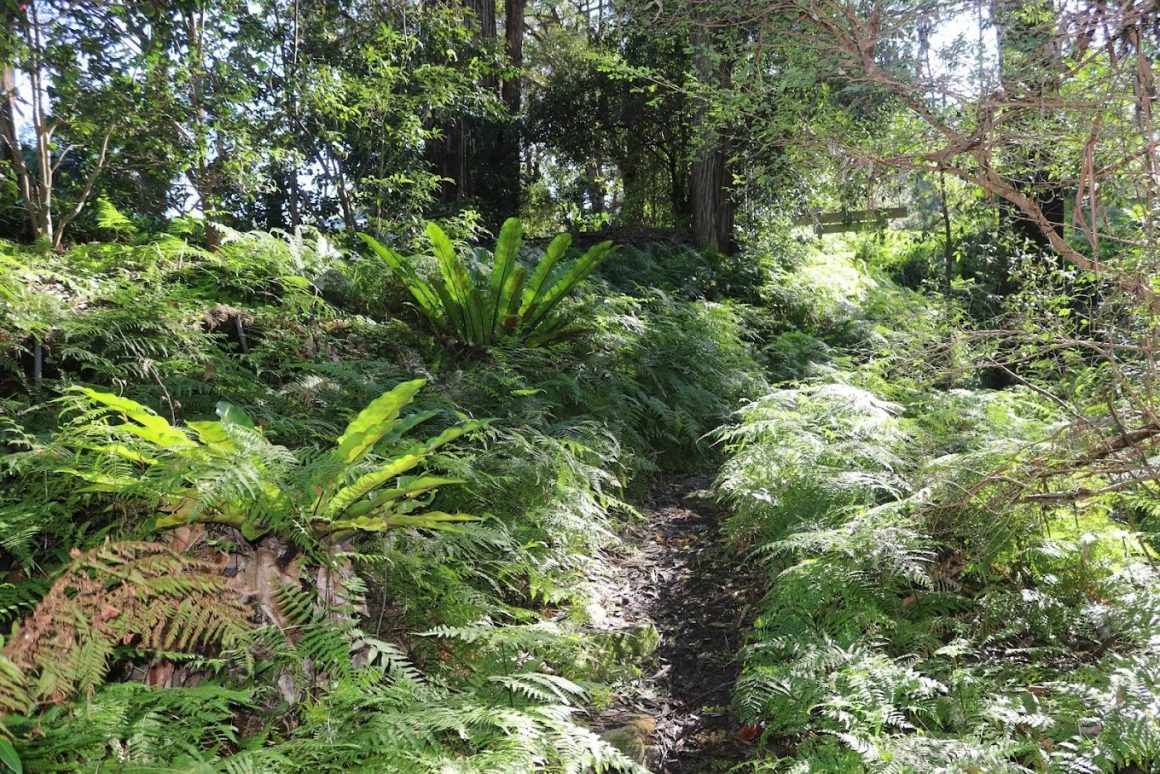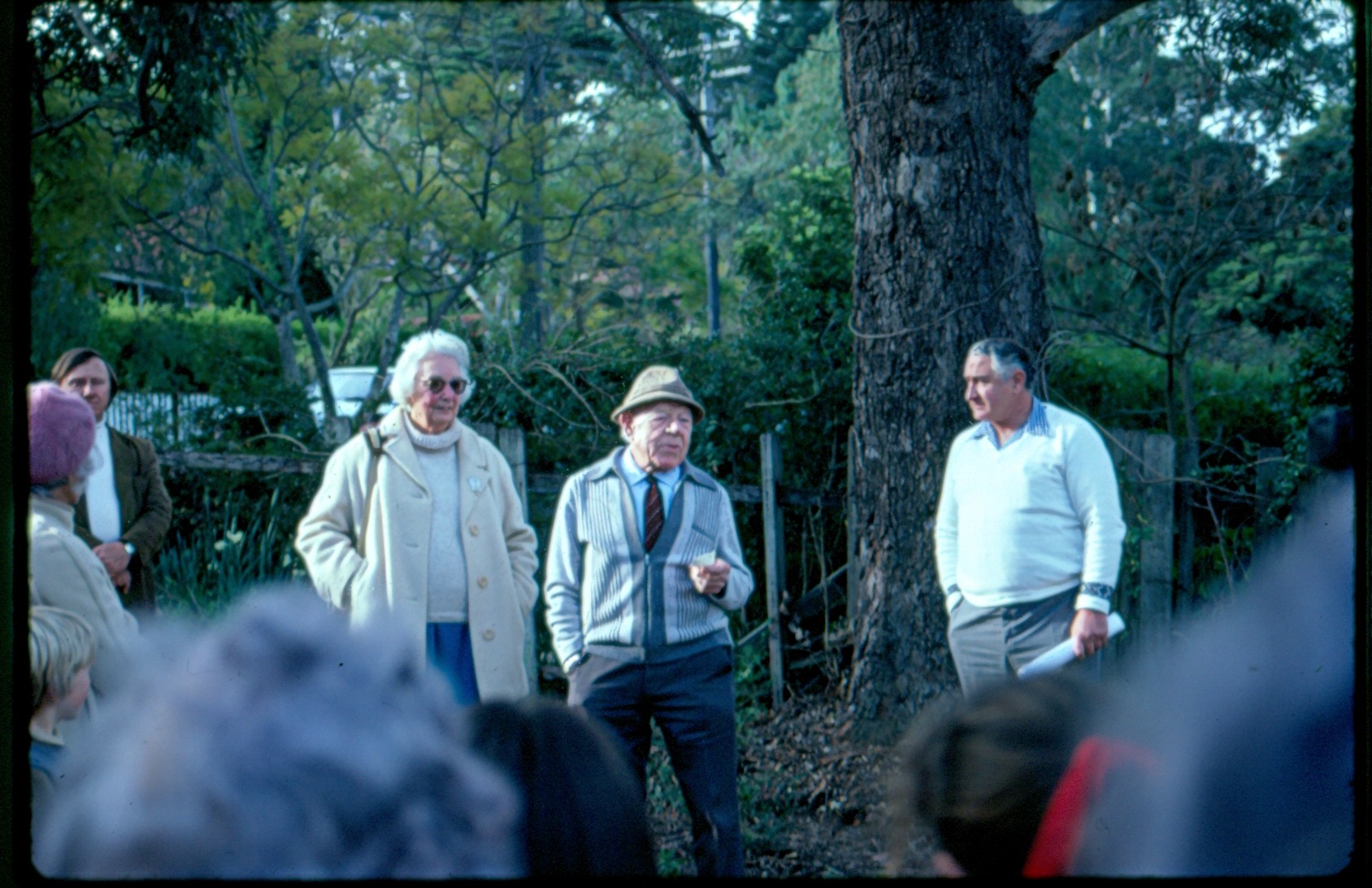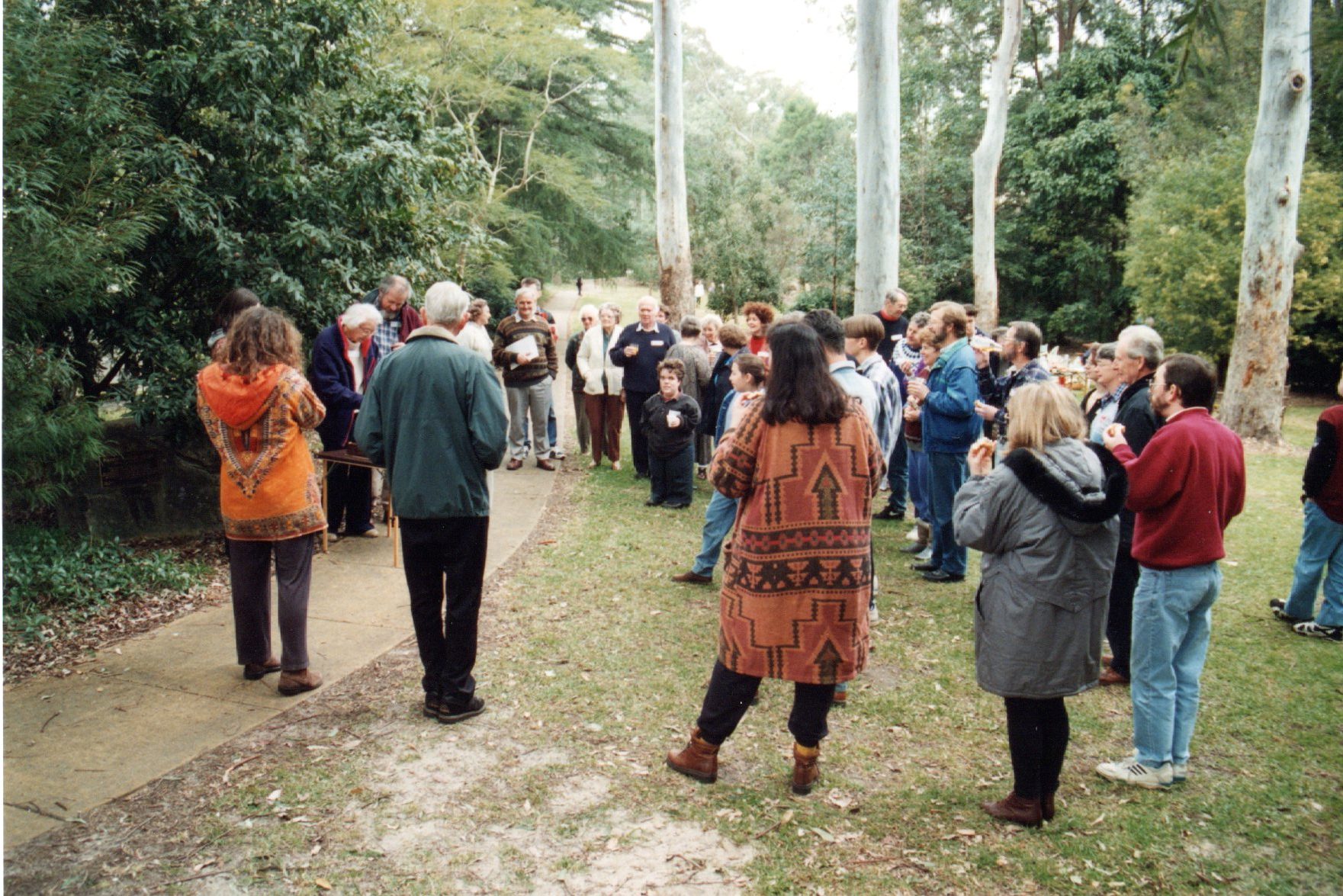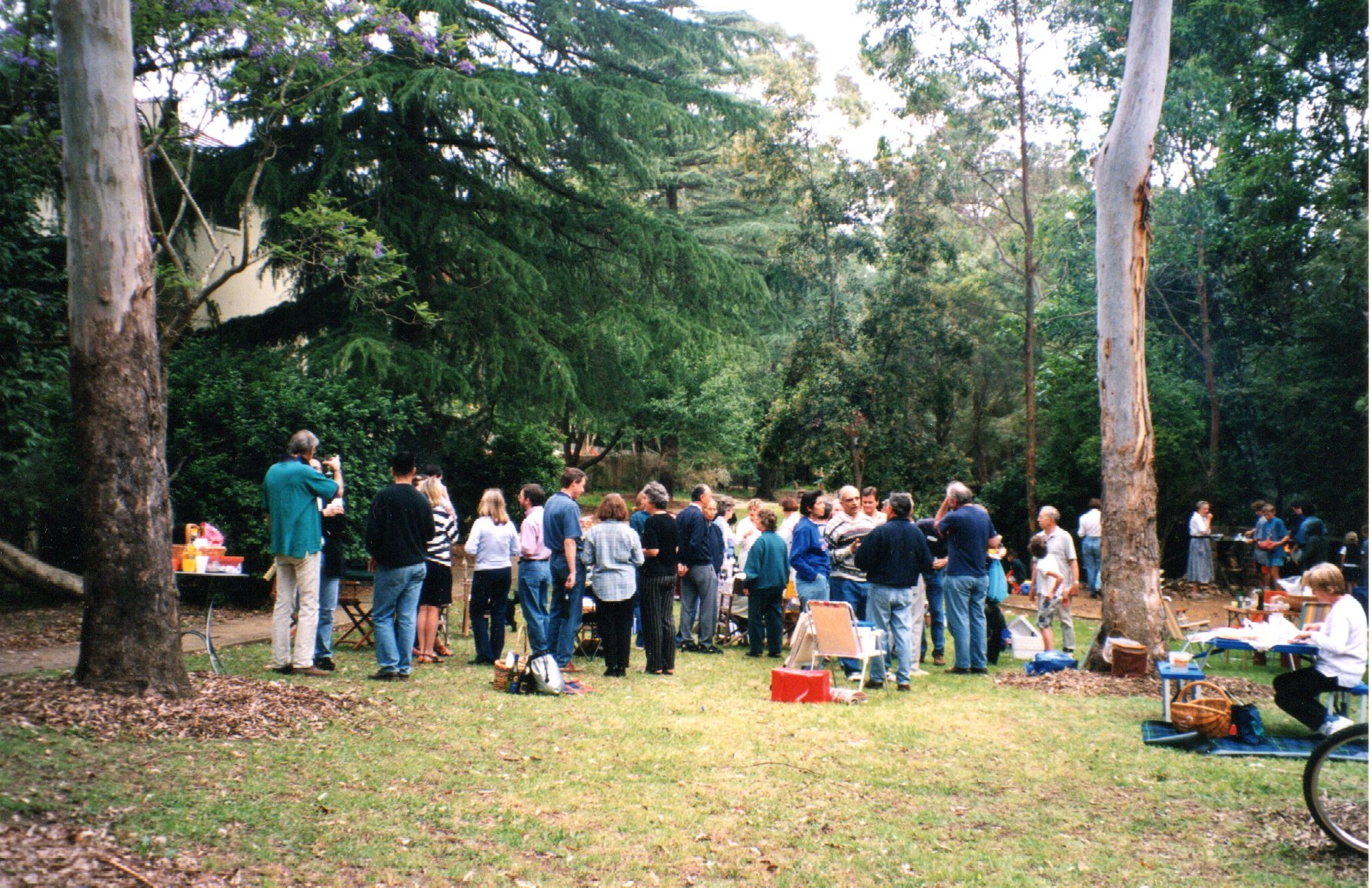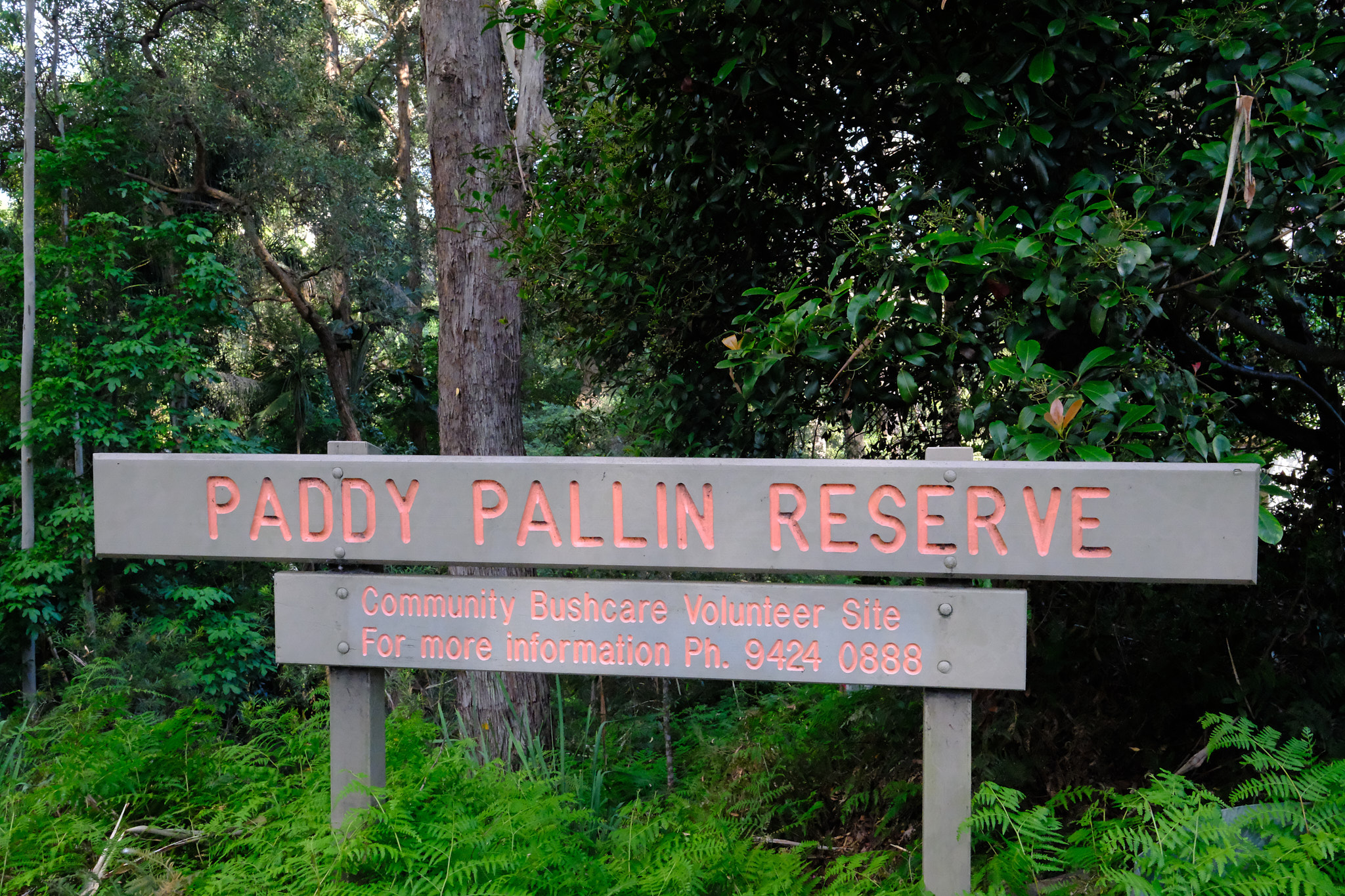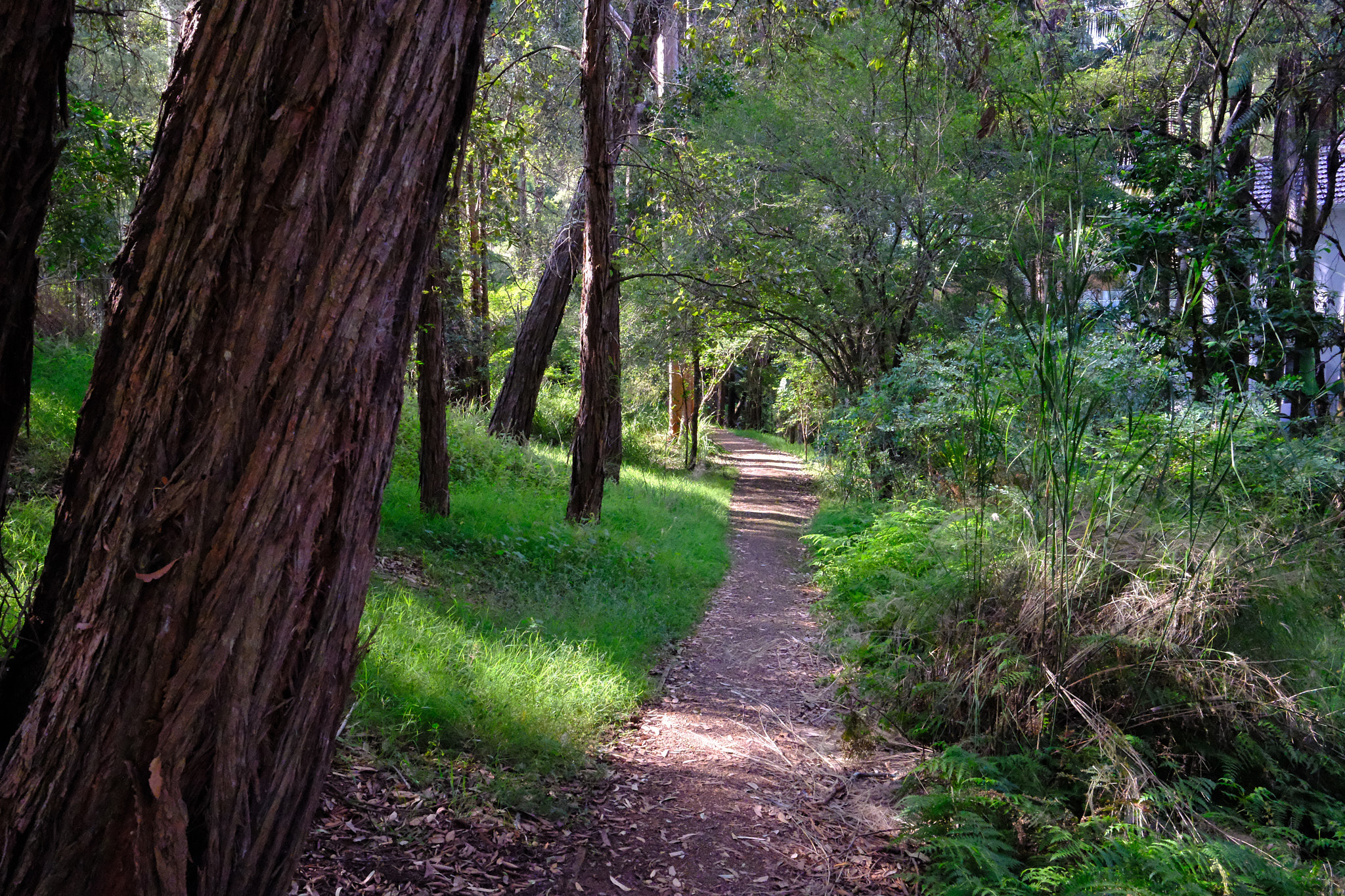Paddy Pallin Reserve
A success story in how to manage bush regeneration on Council lands cost effectively AND triumph over pervasive environmental weeds.
Situated on the catchment of Little Blue Gum Creek, this peaceful Reserve was named after Paddy Pallin and was opened in 1985, by Mayor Ron Yeates, himself a keen bushwalker. Part of Ku-ring-gai Council’s public open space system it was dedicated “in recognition of Paddy Pallin’s services to youth over many years and his encouragement to people of all ages to share his love of the great outdoors.”
The upper part of the Reserve is a formal park with barbecue facilities, a children’s play area, and open grass. Down from here is a wild extension to the Reserve that runs from Provincial Road to Bent Street where Paddy lived for much of his life. It is the perfect place to honour Paddy’s lifelong dedication to outdoor enthusiasts and to our natural environment.
Care of the wild bush sections of the Reserve, a remnant ecological community of the endangered Sydney Turpentine Ironbark Forest, was problematic. As a reclaimed drainage easement next to the original site of the Lindfield laundry, the bushland was weed-infested, covered in balloon vine, morning glory, madeira vine, weed grasses, wandering tradescantia, fishbone fern, agapanthus, and more.
In 2000 the Paddy Pallin Foundation decided it was time to employ a professional team to manage the work of regenerating the whole reserve – the Lane Cove Bush Regenerators Cooperative Ltd. Rymill Abell’s analysis of the project 5 years on showed that “Secure, consistent funding and well-directed bush regeneration had turned the situation around… a few years of intense work had the weeds under control, and maintenance requirements were decreasing”
By 2009, the number of hours of skilled bush regeneration required to maintain the Reserve had dropped from 20 hours per quarter to 9 hours per quarter, the same amount of time as for the Council employees’ previous quarterly involvement in working in that bushland area. Rymill’s conclusion “the original case of bush regeneration being a superior long-term investment for the maintenance of urban bushland has…been verified”
The success of this ongoing project is in part due to the Ku-ring-gai Council for supporting the funding to be made direct to the contractor without bureaucratic delays, Rymill writes “Secure, consistent funding and well-directed bush regeneration turned the situation around. Work has been done at appropriate times when natural events or changing seasons have given rise to the need to deal with particular problems.
The current success of this project “adds weight to the idea that, if you retain the bushland and maintain it as a bush regen site, you may well avoid the need for a more costly restoration phase. Even more importantly, however, it provides some strong figures to counter the argument that …Councils don’t have the funds to maintain bushland to a high standard.”
Today, this successful relationship between PPF and Ku-ring-gai Council continues. Since 2017, because the Lane Cove Bush Regenerators Cooperative disbanded, Bandicoot Bush Regen Pty Ltd continues to maintain the bushland.
Read Rymill Abell’s full article, as published in the Australian Association of Bush Regenerators NSW October 2009 newsletter here
For further reading see his earlier peer-reviewed article published in Ecological Management & Restoration (Vol 6 No 2 August 2005), here
Photo credit: Peter Woodard


